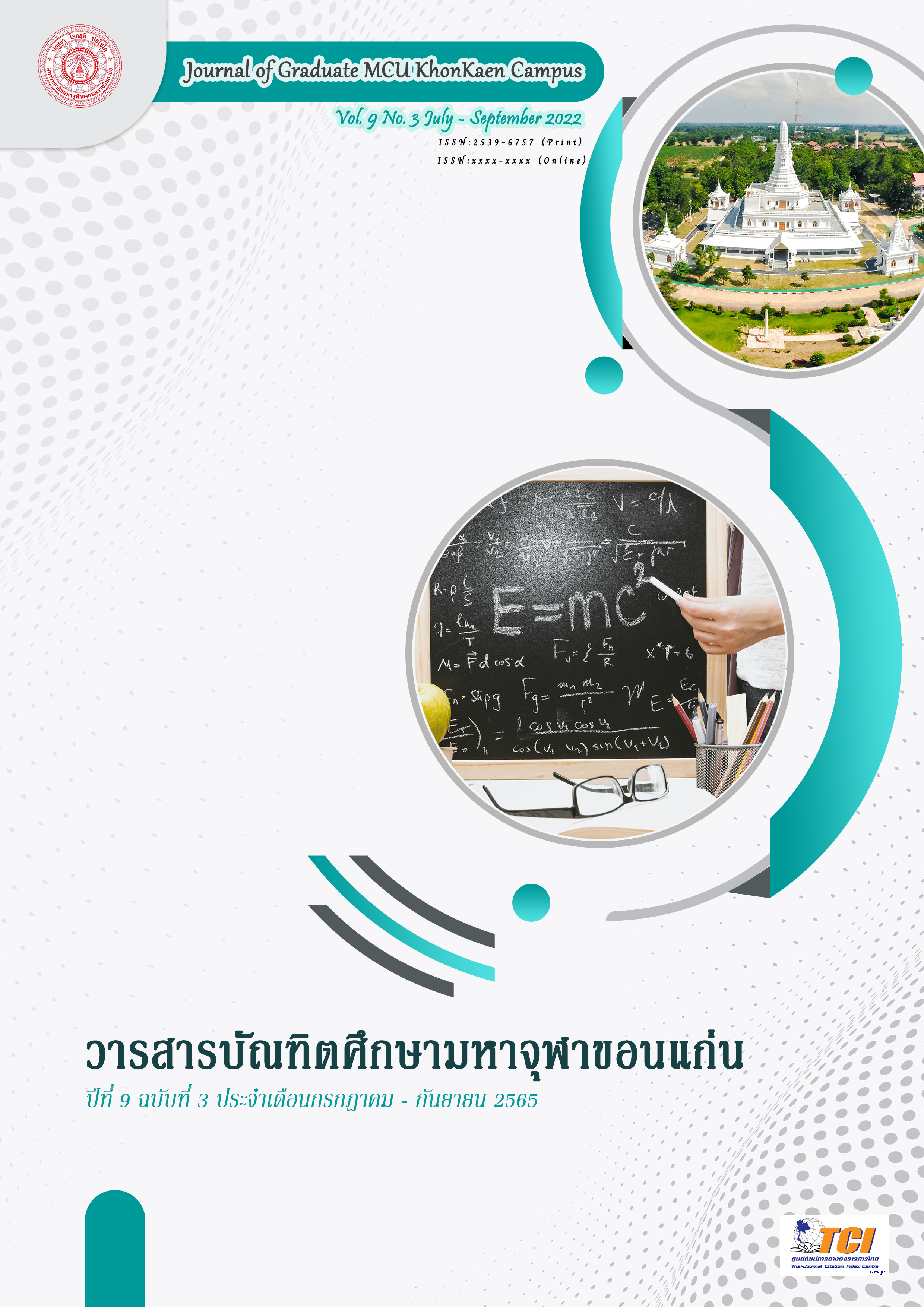Community Tourism Promotion for Ban Laem Sub-district, Bang Pla Ma District to be a Potential Secondary City Tourist Attraction of Suphan Buri Province
Main Article Content
Abstract
This quantitative research aims 1) to study the potential of community tourism in Ban Laem Sub-district and 2) to study the guidelines for promoting the Ban Laem Sub-District community to be a potential secondary city attraction of Suphan Buri Province. The study was conducted with the sampling groups consisting of community leaders, local people, entrepreneurs, and personnel in Ban Laem Subdistrict Municipality. Data were collected from the questionnaire with a non-probability sampling of a quota sample of 50 males and 50 females for 100. Then they randomly selected and analyzed the data and presented it in a descriptive statistic.
The results revealed that the respondents had the highest level of overall opinion on the tourism potential of Ban Laem Subdistrict in all aspects. These were sorted by 1) Activities (= 4.73, S.D. = 0.55), 2) Attraction (
= 4.69, S.D. = 0.55), 3) Accommodation (
= 4.63, S.D. = 0.54), 4) Accessibility to tourist attractions (
= 4.58, S.D. = 0.57) and the last aspect, 5) Amenities and Facilities (
= 4.55, S.D. = 0.59). According to the study of ways to promote Ban Laem Sub-District community to be an important secondary city attraction of Suphan Buri Province, the investigation found that the community needed some help in the following areas: 1) providing knowledge on community tourism management (
= 4.70, S.D. = 0.42) and establishing a community tourism assistance fund (
= 4.70, S.D. = 0.50); 2) the co-creation of cultural tourism activities indicating the identity of the community; 3) the preservation of natural resources and the environment of the community for the tourism activities (
= 4.65, S.D. = 0.55) and the improvement of landscapes and facilities; and 4) the design and co-creation of community products that indicate community identity (
= 4.74, S.D. = 0.46) and providing knowledge about entrepreneurship (Start-up) in community tourism.
Article Details

This work is licensed under a Creative Commons Attribution-NonCommercial-NoDerivatives 4.0 International License.
References
การท่องเที่ยวแห่งประเทศไทย. (2562). นโยบายและแผนการตลาด. สืบค้นเมื่อ 20 กรกฎาคม 2562, จาก https://www.tat.or.th/th/about-tat/market-plan
ชัยนุวัฒน์ ปูนคำปีน และ ชัยพงษ์ สำเนียง. (2555). การท่องเที่ยวโดยชุมชน : การสร้าง ขยายเศรษฐกิจ และวิถีชีวิตท้องถิ่น. สืบค้นเมื่อ 20 กรกฎาคม 2562, จาก https://prachatai.com
มหาวิทยาลัยสุโขทัยธรรมาธราช สาขาวิชาศิลปศาสตร์. (2547). พฤติกรรมองค์การและการจัดการตลาด. (พิมพ์ครั้งที่ 2). นนทบุรี: สำนักพิมพ์มหาวิทยาลัยสุโขทัยธรรมาธราช.
สมยศ โอ่งเคลือบ. (2557). แนวคิดการพัฒนาแหล่งท่องเที่ยว. สืบค้นเมื่อ 5 กันยายน 2562, จาก https://www.slideshare.net/blackstarshooter99/7-1-37072398
สำนักงานสภาพัฒนาเศรษฐกิจและสังคมแห่งชาติ. (2562). แผนพัฒนาเศรษฐกิจและสังคมแห่งชาติ ฉบับที่ 12. สืบค้นเมื่อ20 กรกฎาคม 2562, จาก https://www.nesdc.go.th/ewt_news.php?nid=6420&filename=develop_issue
สุดถนอม ตันเจริญ. (2560). การจัดการการท่องเที่ยวโดยชุมชนเพื่อการพัฒนาการท่องเที่ยวอย่างยั่งยืน. การประชุมวิชาการระดับชาติด้านการจัดการ คณะวิทยาการจัดการ มหาวิทยาลัยราชภัฏบ้านสมเด็จเจ้าพระยา. ครั้งที่ 1. วันที่ 16 มิถุนายน 2560. สืบค้นเมื่อ 20 กรกฎาคม 2562, จาก https://identity.bsru.ac.th/archives/3735
_______. (2018). Tourism Go Local ชุมชนเติบใหญ่ เมืองไทยเติบโต. สืบค้นเมื่อ 20 กรกฎาคม 2562, จาก https://www.tatreviewmagazine.com/article/tourism-go-local/
TATREVIEW. (2018). การท่องเที่ยวชุมชนโดยชุมชน วิถีไทย เก๋ไก๋อย่างยั่งยืน: การท่องเที่ยวหรืออุตสาหกรรมท่องเที่ยวเป็นเรื่องใกล้ตัวกว่าที่คิด. สืบค้นเมื่อ 20 กรกฎาคม 2562, จาก https://www.tatreviewmagazine.com/article/community-based-tourism/
Yamane, T. (1967). Statistics: An Introductory Analysis. (2nd ed.). Harper and Row, New York.

